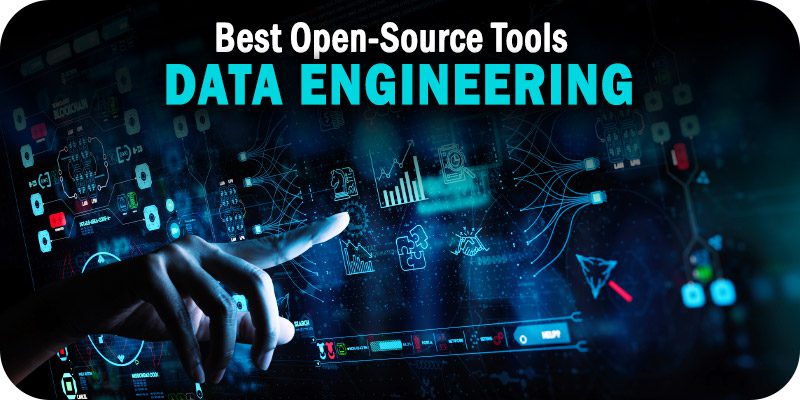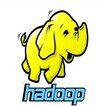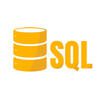The 15 Best Open-Source Data Engineering Tools for 2023


The editors at Solutions Review compiled this list of the best open-source data engineering tools to help you narrow your search.
Searching for data integration and data management software can be a daunting (and expensive) process, one that requires long hours of research and deep pockets. The most popular enterprise data engineering tools often provide more than what’s necessary for non-enterprise organizations, with advanced functionality relevant to only the most technically savvy users. Thankfully, there are a distinct group of the best open-source data engineering tools out there. Some of these solutions are offered by vendors looking to eventually sell you on their enterprise product, and others are maintained and operated by a community of developers looking to democratize the process.
In this article, we will examine the best open-source data engineering tools, first by providing a brief overview of what to expect and also with short blurbs about each of the currently available options in the space.
Note: The best open-source data engineering tools are listed in alphabetical order.
The Best Open-Source Data Engineering Tools
Apache Airflow
 Apache Airflow is a platform that allows you to programmatically author, schedule, and monitor workflows. The tool enables users to author workflows as directed acyclic graphs (DAGs). The airflow scheduler executes tasks on an array of workers while following the specified dependencies. Airflow provides rich command-line utilities that make performing complex surgeries on DAGs simple. The user interface also provides capabilities that enable users to visualize pipelines running production, monitor progress, and troubleshoot issues when needed.
Apache Airflow is a platform that allows you to programmatically author, schedule, and monitor workflows. The tool enables users to author workflows as directed acyclic graphs (DAGs). The airflow scheduler executes tasks on an array of workers while following the specified dependencies. Airflow provides rich command-line utilities that make performing complex surgeries on DAGs simple. The user interface also provides capabilities that enable users to visualize pipelines running production, monitor progress, and troubleshoot issues when needed.
Apache Cassandra
 Apache Cassandra is a free and open-source database management system that can handle large amounts of data across commodity services. As a result, it offers high availability with no single point of failure. Cassandra features support for replicating across multiple data centers and provides low latency, fault tolerance, and scalability that make it a consideration for mission-critical data. Users can choose between synchronous or asynchronous replication for each update.
Apache Cassandra is a free and open-source database management system that can handle large amounts of data across commodity services. As a result, it offers high availability with no single point of failure. Cassandra features support for replicating across multiple data centers and provides low latency, fault tolerance, and scalability that make it a consideration for mission-critical data. Users can choose between synchronous or asynchronous replication for each update.
Apache Hadoop
 Hadoop is an open-source framework that is written in Java by the Apache Software Foundation. This framework is used to write software applications that require processing vast amounts of data. It works in parallel on large clusters which could have thousands of computers (nodes) on the clusters. It also processes data very reliably and in a fault-tolerant manner. Hadoop as we know it today began as an experiment in distributed computing for Yahoo’s internet search but has since evolved into the open-source big data framework of choice in some of the world’s largest organizations.
Hadoop is an open-source framework that is written in Java by the Apache Software Foundation. This framework is used to write software applications that require processing vast amounts of data. It works in parallel on large clusters which could have thousands of computers (nodes) on the clusters. It also processes data very reliably and in a fault-tolerant manner. Hadoop as we know it today began as an experiment in distributed computing for Yahoo’s internet search but has since evolved into the open-source big data framework of choice in some of the world’s largest organizations.
Apache Hive
 Apache Hive is an open-source data warehouse built on top of the Apache Hadoop ecosystem. It was designed to facilitate data summarization, ad-hoc queries, and the analysis of extremely large data volumes stored in various databases and file systems that integrate with Hadoop. Hive offers an excellent package for applying structure to large amounts of unstructured data and performing batch SQL-like queries. It integrates with traditional data center solutions that use the JDBC/ODBC interface.
Apache Hive is an open-source data warehouse built on top of the Apache Hadoop ecosystem. It was designed to facilitate data summarization, ad-hoc queries, and the analysis of extremely large data volumes stored in various databases and file systems that integrate with Hadoop. Hive offers an excellent package for applying structure to large amounts of unstructured data and performing batch SQL-like queries. It integrates with traditional data center solutions that use the JDBC/ODBC interface.
Apache Kafka
 Apache Kafka is a distributed streaming platform that enables users to publish and subscribe to streams of records, store streams of records, and process them as they occur. Kafka is most notably used for building real-time streaming data pipelines and applications and is run as a cluster on one or more servers that can span more than one data center. The Kafka cluster stores streams of records in categories called topics, and each record consists of a key, a value, and a timestamp.
Apache Kafka is a distributed streaming platform that enables users to publish and subscribe to streams of records, store streams of records, and process them as they occur. Kafka is most notably used for building real-time streaming data pipelines and applications and is run as a cluster on one or more servers that can span more than one data center. The Kafka cluster stores streams of records in categories called topics, and each record consists of a key, a value, and a timestamp.
Apache Kudu
 Apache Kudu is an open-source distributed data storage engine that solves for streaming and real-time data analytics. Kudu provides a combination of fast inserts/updates and efficient columnar scans to enable multiple real-time analytic workloads across a single storage layer. Founded by long-time contributors to the Apache big data ecosystem, Apache Kudu is a top-level Apache Software Foundation project released under the Apache 2 license.
Apache Kudu is an open-source distributed data storage engine that solves for streaming and real-time data analytics. Kudu provides a combination of fast inserts/updates and efficient columnar scans to enable multiple real-time analytic workloads across a single storage layer. Founded by long-time contributors to the Apache big data ecosystem, Apache Kudu is a top-level Apache Software Foundation project released under the Apache 2 license.
Apache Spark
 Apache Spark is a unified analytics engine for large-scale data processing. It is noted for its high performance for both batch and streaming data by using a DAG scheduler, query optimizer, and a physical execution engine. Spark offers more than 80 high-level operators that can be used interactively from the Scala, Python, R, and SQL shells. The engine powers a stack of libraries including SQL and DataFrames, MLib for machine learning, GraphX, and Spark Streaming. Spark runs on Hadoop, Apache Mesos, Kubernetes, standalone, or in the cloud.
Apache Spark is a unified analytics engine for large-scale data processing. It is noted for its high performance for both batch and streaming data by using a DAG scheduler, query optimizer, and a physical execution engine. Spark offers more than 80 high-level operators that can be used interactively from the Scala, Python, R, and SQL shells. The engine powers a stack of libraries including SQL and DataFrames, MLib for machine learning, GraphX, and Spark Streaming. Spark runs on Hadoop, Apache Mesos, Kubernetes, standalone, or in the cloud.
Great Expectations
 Great Expectations is a shared, open standard for data quality that helps teams eliminate pipeline debt. do data testing, documentation, and profiling. Great Expectations recommends deploying within a virtual environment if unfamiliar with the software. Key features include assertations of data, automated data profiling, data validation, and pluggable and extensibility capabilities.
Great Expectations is a shared, open standard for data quality that helps teams eliminate pipeline debt. do data testing, documentation, and profiling. Great Expectations recommends deploying within a virtual environment if unfamiliar with the software. Key features include assertations of data, automated data profiling, data validation, and pluggable and extensibility capabilities.
MariaDB
 MariaDB is an open-source and commercially supported fork of the MySQL relational database management system. It was developed by the original creators of MySQL and turns data into structured information in a wide array of applications. MariaDB features an expansive ecosystem of storage engines, plugins and many other tools. The latest version of MariaDB includes GIS and JSON functionality. The database is supported by Microsoft Azure and Amazon RDS and is available as-a-service for production workloads from the source by MariaDB Corporation as SkySQL.
MariaDB is an open-source and commercially supported fork of the MySQL relational database management system. It was developed by the original creators of MySQL and turns data into structured information in a wide array of applications. MariaDB features an expansive ecosystem of storage engines, plugins and many other tools. The latest version of MariaDB includes GIS and JSON functionality. The database is supported by Microsoft Azure and Amazon RDS and is available as-a-service for production workloads from the source by MariaDB Corporation as SkySQL.
Metabase
 Metabase is an open-source business intelligence tool that allows users to ask questions about data. The tool then displays answers in formats that make the most sense, whether in a bar graph or a detailed table. Questions can be saved for later or grouped together into dashboards for later use. Metabase also allows users to share questions and dashboards with other members of your team. The tool also provides an SQL interface for developers in need of more advanced functionality.
Metabase is an open-source business intelligence tool that allows users to ask questions about data. The tool then displays answers in formats that make the most sense, whether in a bar graph or a detailed table. Questions can be saved for later or grouped together into dashboards for later use. Metabase also allows users to share questions and dashboards with other members of your team. The tool also provides an SQL interface for developers in need of more advanced functionality.
PostgreSQL
 PostgreSQL is an object-relational database system that uses and extends the SQL language. It comes with many features aimed at helping users build applications, protect data integrity, and build fault-tolerant environments. PostgreSQL conforms to 160 of the 179 mandatory features for SQL:2-11 Core conformance and supports a wide variety of data types. The software is highly extensible and many of the features, such as indexes, have defined APIs so that you can build out with it to solve unique challenges.
PostgreSQL is an object-relational database system that uses and extends the SQL language. It comes with many features aimed at helping users build applications, protect data integrity, and build fault-tolerant environments. PostgreSQL conforms to 160 of the 179 mandatory features for SQL:2-11 Core conformance and supports a wide variety of data types. The software is highly extensible and many of the features, such as indexes, have defined APIs so that you can build out with it to solve unique challenges.
Presto
 Presto is an open-source SQL query engine designed for running interactive and ad hoc queries quickly. Presto can query relational & NoSQL databases, data warehouses, data lakes, and more and has dozens of connectors available today. It also allows querying data where it lives and a single Presto query can combine data from multiple sources, allowing for analytics across your entire organization. Presto can be used for interactive and batch workloads, small and large amounts of data, and scales from a few to thousands of users.
Presto is an open-source SQL query engine designed for running interactive and ad hoc queries quickly. Presto can query relational & NoSQL databases, data warehouses, data lakes, and more and has dozens of connectors available today. It also allows querying data where it lives and a single Presto query can combine data from multiple sources, allowing for analytics across your entire organization. Presto can be used for interactive and batch workloads, small and large amounts of data, and scales from a few to thousands of users.
Python
 Python is an object-oriented programming language comparable to Perl, Ruby, Scheme, and Java. It utilizes an elegant syntax that makes the programs you write easier to read, and it is ideal for prototype development and other ad-hoc tasks. Python comes with a large standard library that supports many common programming tasks as well, including connecting to web servers, searching text with expressions, and reading and modifying files. The language can be extended by adding new modules as well.
Python is an object-oriented programming language comparable to Perl, Ruby, Scheme, and Java. It utilizes an elegant syntax that makes the programs you write easier to read, and it is ideal for prototype development and other ad-hoc tasks. Python comes with a large standard library that supports many common programming tasks as well, including connecting to web servers, searching text with expressions, and reading and modifying files. The language can be extended by adding new modules as well.
SQL
 SQL is a domain-specific programming language designed for managing data held in relational database management systems. The language’s most common application is in handling structured data. SQL is made up of several sub-languages including those for data query, data definition, data control, and data manipulation. Extensions to standard SQL add procedural programming language functionality, such as control-of-flow constructs. SQL was originally based on relational algebra and tuple relational calculus.
SQL is a domain-specific programming language designed for managing data held in relational database management systems. The language’s most common application is in handling structured data. SQL is made up of several sub-languages including those for data query, data definition, data control, and data manipulation. Extensions to standard SQL add procedural programming language functionality, such as control-of-flow constructs. SQL was originally based on relational algebra and tuple relational calculus.
Terraform
 Offered by HashiCorp, Terraform is an open-source infrastructure as code software tool that enables users to predictably create, change, and improve infrastructure. The solution composes infrastructure as code in a Terraform file using HCL to provision resources. Terraform also includes automation workflows used to compose, collaborate, reuse, and provision infrastructure as code across IT operations and teams of developers. Infrastructure automation workflows extend to all teams in the organization with self-service, as well.
Offered by HashiCorp, Terraform is an open-source infrastructure as code software tool that enables users to predictably create, change, and improve infrastructure. The solution composes infrastructure as code in a Terraform file using HCL to provision resources. Terraform also includes automation workflows used to compose, collaborate, reuse, and provision infrastructure as code across IT operations and teams of developers. Infrastructure automation workflows extend to all teams in the organization with self-service, as well.




















